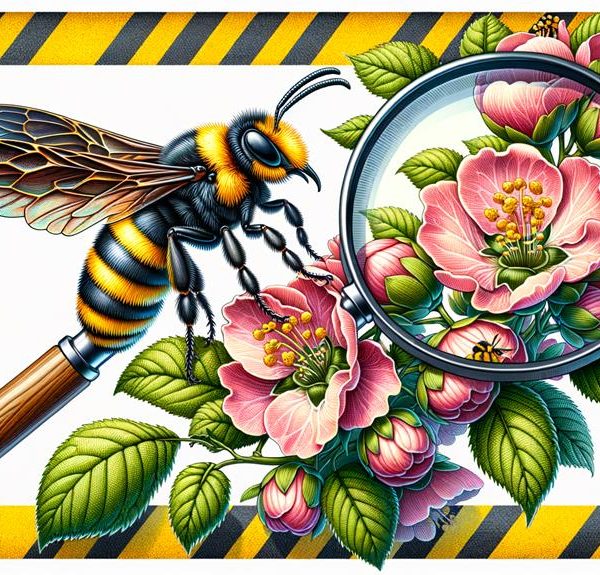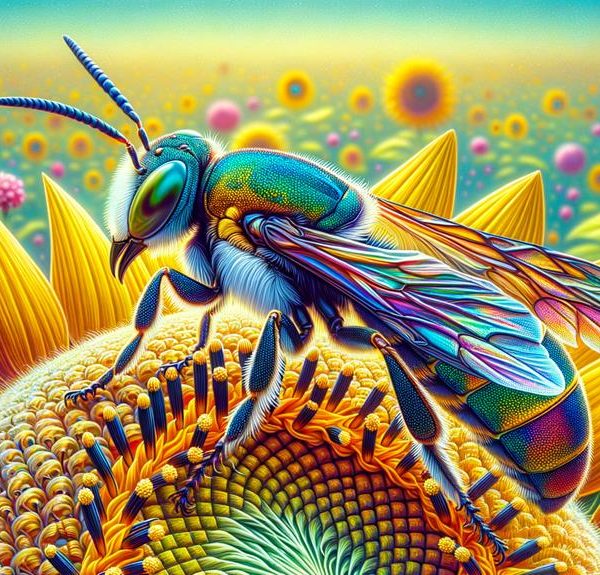Journey into the fascinating world of the Orchid Cuckoo Bee, a unique species with intriguing nesting habits and critical ecological impacts.
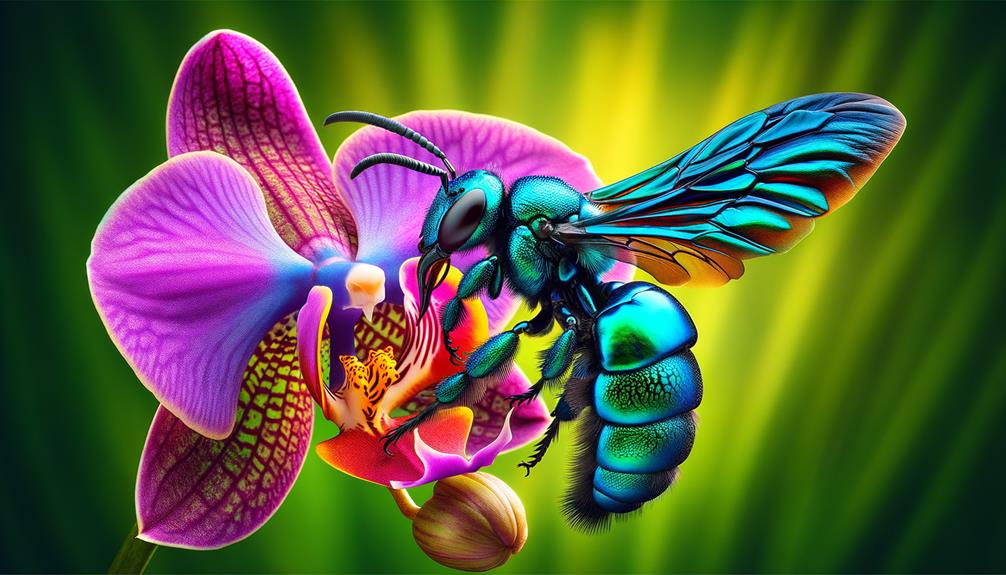
Orchid Cuckoo Bee
Just as you're observing a beautiful orchid, you might be surprised to find a little creature buzzing around it – the Orchid Cuckoo Bee. You've probably heard of bees and their crucial role in pollination, but there's so much more to uncover about this particular species.
Did you know that, unlike most bees, they don't build their own nests? Instead, they're notorious for their unusual nesting habits. Yet, that's just the tip of the iceberg. There's a whole world to explore about this intriguing creature and its impact on our ecosystem.
Understanding the Orchid Cuckoo Bee
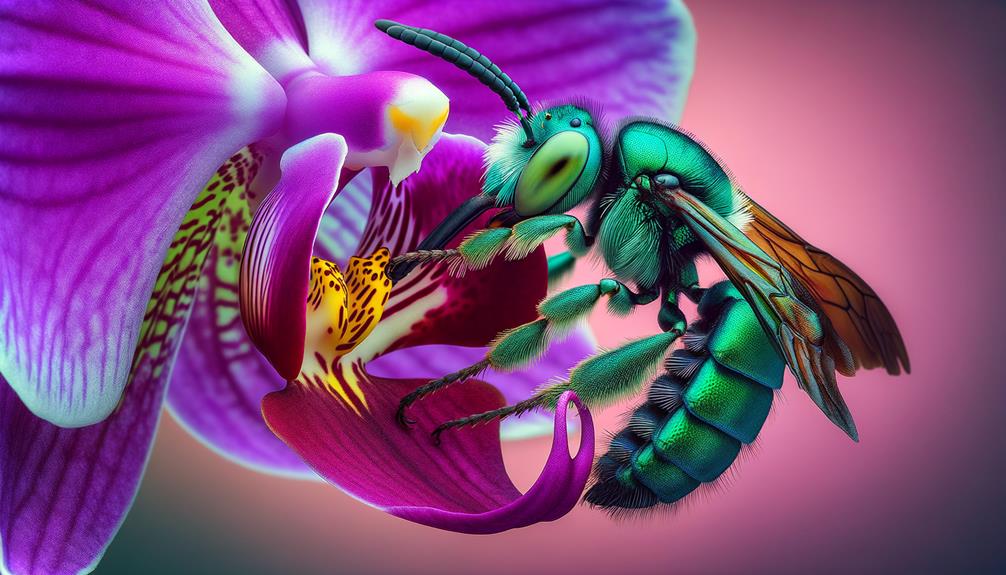
To truly grasp the unique nature of the Orchid Cuckoo Bee, it's vital to delve into its distinctive characteristics, behaviors, and the ecological role it plays in its habitat.
You'll find these bees are petite, with a size range of 7.5-9mm. They feature a predominantly metallic blue-green body, with females exhibiting red on their abdomen. Their wings are dark and semi-transparent, further adding to their aesthetic appeal.
Behaviorally, they're known as 'cleptoparasites'. This means they don't collect pollen for their offspring. Instead, they lay their eggs in the nests of other bees, primarily those of the Blue-banded Bee. Once the Orchid Cuckoo Bee's egg hatches, the larva consumes the host bee's pollen and nectar provisions. It's a survival strategy that's both fascinating and ruthless.
Ecologically, these bees are significant. As cleptoparasites, they help control the population of their host bees, ensuring a balance within their shared habitats. However, their reliance on other bees also makes their survival vulnerable to declines in host bee populations.
The Orchid Cuckoo Bee's Lifecycle
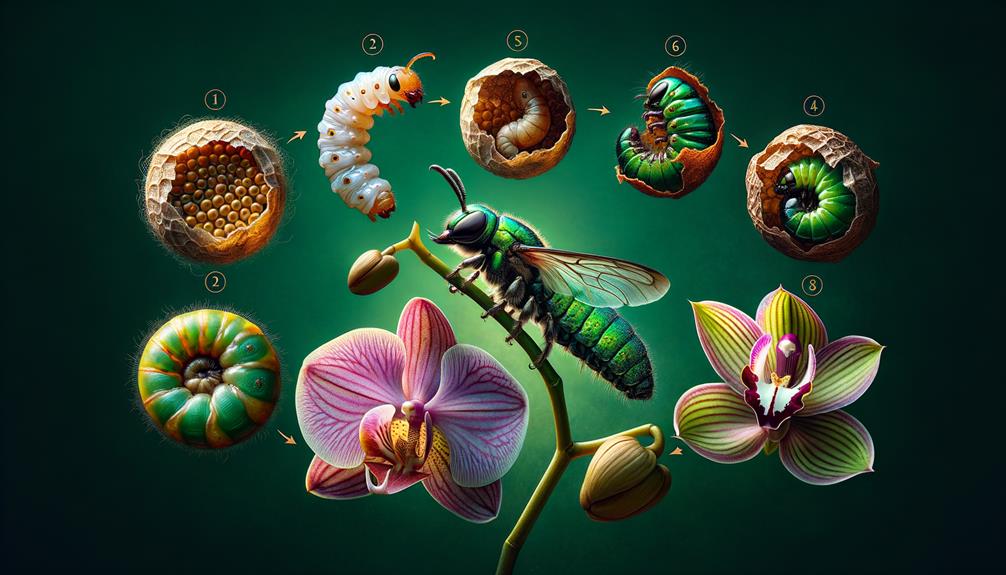
Delving into the lifecycle of the Orchid Cuckoo Bee, you'll find it's a fascinating journey marked by cunning survival strategies and intricate dependencies. This cycle begins when a female bee lays her eggs in the nests of other solitary bees, employing a form of parasitism. The Orchid Cuckoo Bee doesn't build its own nest, but relies on the industry of others, a behavior known as kleptoparasitism.
The lifecycle continues as the larva hatches, at which point it consumes the host bee's provisioned food. This strategy allows the Orchid Cuckoo Bee to save valuable energy that would otherwise be used in foraging and nest construction. As the larva grows, it undergoes multiple development stages called instars, each marked by a molting process where the old skin is shed to accommodate the growing body.
In the final stage, the larva spins a cocoon and pupates, a period of transition from larva to adult bee. This phase is known as metamorphosis, a pivotal point in the lifecycle of the Orchid Cuckoo Bee. Once the bee emerges as an adult, it's ready to continue this intricate cycle of life, demonstrating the beauty of nature's survival strategies.
Unique Reproduction Tactics
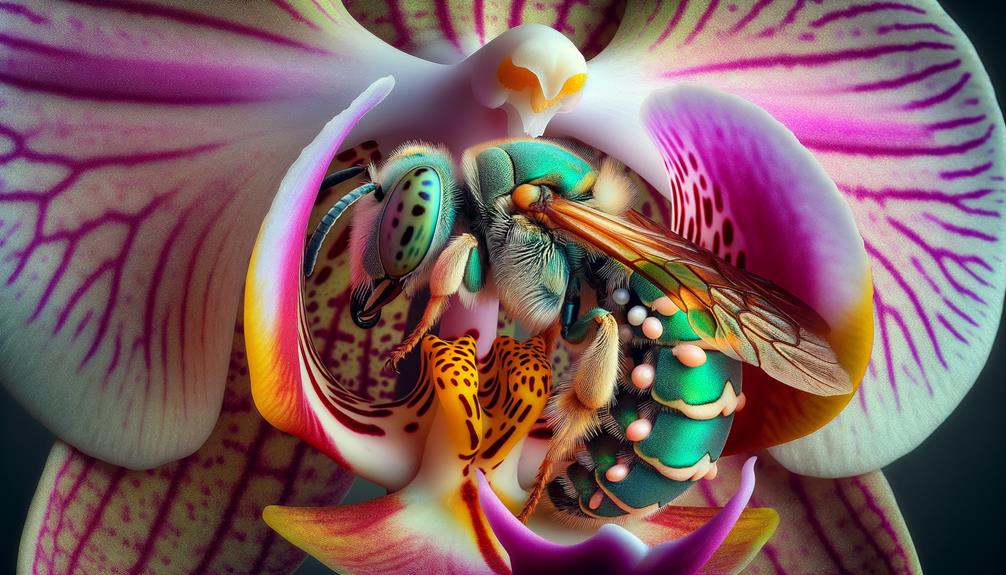
In the world of the Orchid Cuckoo Bee, reproduction isn't a simple affair, but rather an intricate dance of deception and resourcefulness. Unlike many other species, these bees don't build their own nests. Instead, they exploit the hard work of others in a strategy known as brood parasitism.
- Laying Eggs: Orchid Cuckoo Bees lay their eggs in the nests of other bees. They aren't just opportunistic; they're strategic, selecting nests that are under construction and not yet sealed by the host bee. This allows them to deposit their eggs without detection.
- Camouflage: Their eggs mimic the size, shape, and even the smell of the host bee's eggs. This camouflage protects them from being recognized and removed by the host bee.
- Survival Strategy: Once their larvae hatch, they consume the host's eggs or larvae and the food provisioned for them. This strategy ensures the survival of the Orchid Cuckoo Bee's offspring at the expense of the host species.
Thus, the Orchid Cuckoo Bee's reproduction tactics are a fascinating blend of cunning, deception, and survival instinct.
Role in the Ecosystem
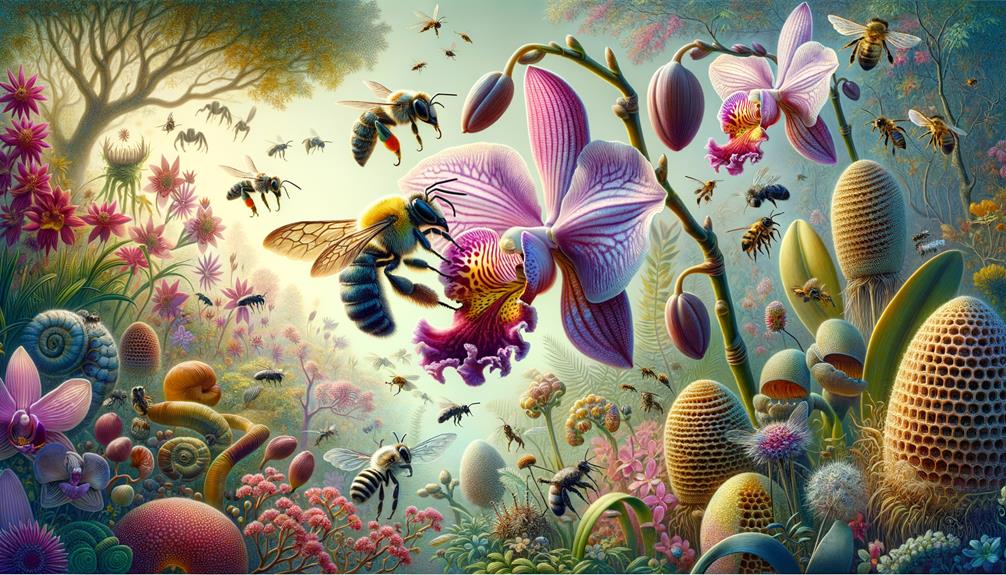
How does the Orchid Cuckoo Bee, with its unconventional reproduction tactics, fit into and impact its ecosystem? This solitary bee, infamous for its brood parasitism, plays a significant role in the biodiversity of its habitat. Despite not being direct pollinators, their unique reproduction behaviour indirectly aids in the pollination process.
When female Orchid Cuckoo bees invade the nests of host bees to lay their eggs, they often carry pollen on their bodies, inadvertently contributing to cross-pollination. As the eggs hatch, the parasitic larvae consume the host's pollen stores, helping control the population of these host species. This control ensures a balance, preventing the overpopulation of a single species and promoting overall ecosystem diversity.
Here's a simple table to illustrate their role:
Role in Ecosystem | Explanation |
|---|---|
Indirect Pollination | Carry pollen inadvertently during nest invasion. |
Population Control | Parasitic larvae consume host's pollen stores. |
Biodiversity | Their existence helps maintain species diversity. |
Ecological Balance | By controlling host bee populations, they maintain ecological balance. |
Threats and Conservation Efforts

While the Orchid Cuckoo Bee plays a pivotal role in maintaining ecosystem balance, it's crucial to understand the threats it faces and the conservation efforts implemented to protect this unique species.
The Orchid Cuckoo Bee is subjected to several threats, most notably:
- Habitat Loss: This is primarily due to human activities like deforestation and urbanization. Loss of its orchid habitats means fewer resources for survival, leading to a decrease in its population.
- Pesticide Use: Pesticides used in agriculture can be lethal to these bees. Even sub-lethal exposure can affect their foraging behavior and reproductive capacity.
- Climate Change: Changes in temperature and precipitation can disrupt the lifecycle of the orchids they depend on, thereby affecting the bees indirectly.
In response to these threats, numerous conservation efforts are being made. These include the implementation of habitat protection and restoration programs, reduction in the use of harmful pesticides, and raising awareness about the importance of these bees in our ecosystem. However, continued research is essential to fully understand the implications of these threats and to devise effective conservation strategies.
After all, safeguarding the Orchid Cuckoo Bee isn't just about preserving a species—it's about maintaining the balance of our entire ecosystem.
Conclusion
You've journeyed into the fascinating world of the orchid cuckoo bee. Their unique lifecycle, unconventional reproduction tactics, and crucial role in the ecosystem have been explored.
They face threats, yet conservation efforts are underway. Understanding these bees isn't just scientific curiosity—it's essential for preserving our biodiversity.
So next time you spot an orchid, remember, you might be witnessing a small but significant part of nature's extraordinary tapestry.

